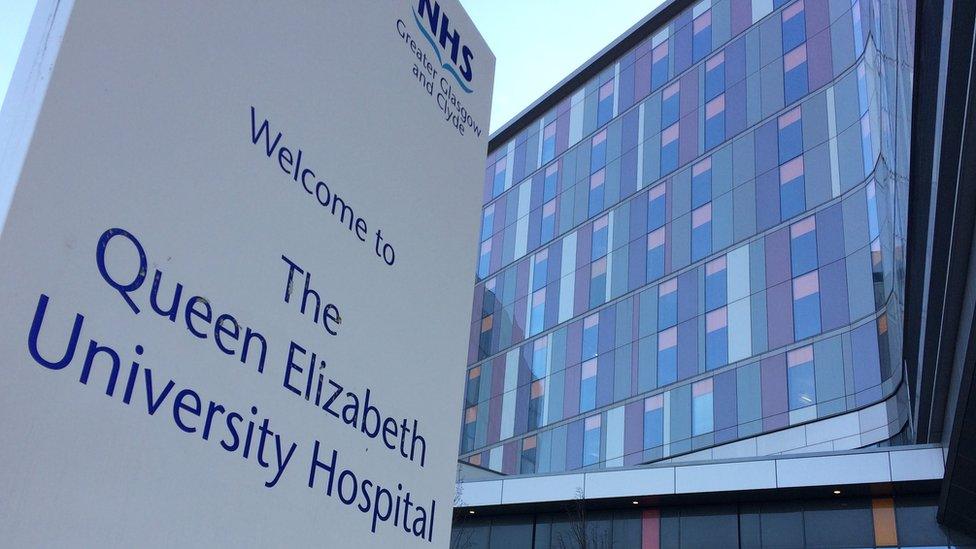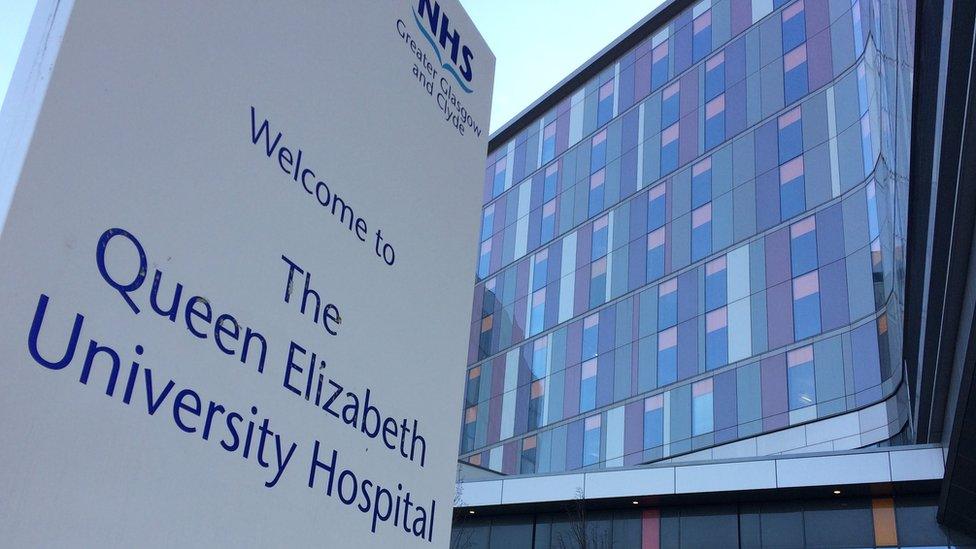Prosecutors consider Glasgow HSE hospital infection report
- Published

The Queen Elizabeth University Hospital in Glasgow opened in 2015
Prosecutors are considering a health and safety report into an infection outbreak at the Queen Elizabeth University Hospital in Glasgow.
A 10-year-old boy and a 73-year-old woman died after contracting the Cryptococcus infection, linked to pigeon droppings.
They were being treated at the hospital in December 2018 and January 2019.
The Health and Safety Executive (HSE) investigated the building and ventilation systems at the hospital.
In December last year it issued an Improvement Notice for ventilation , externalin one ward and has also issued a Notification of Contravention to Greater Glasgow Health Board.
The findings have been passed to the Crown Office as part its ongoing investigation into the deaths.
NHS Greater Glasgow and Clyde said it has appealed the improvement notice but a date for the appeal - which was paused by the pandemic - has yet to be confirmed.
Gail Armstrong, 73, from Glasgow, had been treated for blood cancer in Glasgow's Queen Elizabeth University Hospital before she died in January last year.
In the weeks before her death she had contracted a Cryptococcus infection.
Cryptococcus is widely present in the environment but can be lethal to patients with compromised immune systems.
Pigeon excrement at a plant room on the 12th floor in the hospital was at first thought to be the "likely source".
The health board later ruled out the plant room and an independent review, external said there was "not a sound evidential basis" on which to make a link between the Cryptococcus neoformans infections and the presence of pigeon excrement at the hospital.

Gail Armstrong died in January 2019 after being treated at the hospital
Ms Armstrong died just weeks after the infection had been a "contributory factor" in the death of the 10-year-old boy at the hospital campus.
Her daughter Beth told the BBC's Disclosure programme The Secrets of Scotland's Superhospital that the family had now lost trust that Glasgow's health board would be honest and open about the cause of her death.
The family maintain that the infection was contracted in the hospital and that, although she was terminally ill with lymphoma, it hastened her death because she was unable to get the treatment she needed.
The death of Ms Armstrong and the boy, who was never identified, prompted a series of investigations into the design and build of the hospital.
'Thoroughly investigated'
A Crown Office spokesman said: "The Crown Office and Procurator Fiscal Service is committed to ensuring that the facts and circumstances surrounding the deaths of a 10-year-old boy and a 73-year-old woman at the Queen Elizabeth University Hospital in December 2018 and January 2019 respectively are thoroughly investigated by the relevant agencies, fully considered by COPFS and, in due course, aired in an appropriate legal forum.
"The nearest relatives will continue to be kept updated in relation to any significant developments."
An HSE spokesperson said: "HSE has now completed its investigation into the Cryptococcus outbreak at the Queen Elizabeth University Hospital.
"We will continue to work with Greater Glasgow Health Board over the matters we have identified as requiring improvement, and are supporting the forthcoming public inquiry."
NHS Greater Glasgow and Clyde said it had been working with the HSE as part of its "ongoing commitment to providing a safe environment for our patients and staff".
- Published24 June 2020

- Published15 June 2020

- Published22 January 2019

- Published22 January 2019

- Published19 January 2019
